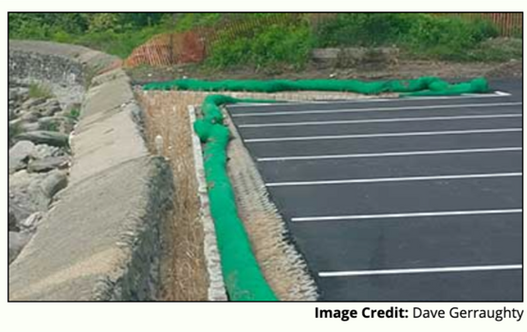East Bay Green Infrastructure Coalition Stormwater Projects
- rkopp5
- Aug 21, 2020
- 3 min read
Buffer Plantings in Roger Williams Park. Image Credit: Casey Chan
By: Casey Chan
Special thanks to Sara Churgin and Lauren Carson.
The Rhode Island Green Infrastructure Coalition (RI GIC) fosters sustainable stormwater management programs which prioritize implementing green infrastructure. The RI GIC focuses on green infrastructure because it delivers environmental, social and economic benefits beyond flood control, such as recharging groundwater reserves, reducing urban heat islands, improving habitats and providing recreational spaces in urban areas. Learn more about what they do here.
Stormwater management practices are changing. Traditional gray infrastructure treatment to manage stormwater is increasingly shifting to green stormwater infrastructure, where natural landscapes are used to infiltrate and treat stormwater runoff. The RI GIC’s projects and the installations at the Providence Stormwater Innovation Center, among others, provide testing grounds for green stormwater practices and maintenance.
The RI GIC works in the Providence metro area and in the East Bay, and its work is organized into three categories: Policy, Projects, and Communication. East Bay GIC leadership team members Lauren Carson and Sara Churgin lead the East Bay effort and provided details about their work. While municipal staff may be knowledgeable about stormwater pollution and its impact on the environment, most residents are not. For this reason, the East Bay’s GIC projects at residential properties, such as nine installed rain gardens and one pervious paver driveway, are used to increase awareness about stormwater management. Projects are selected through an inclusive and participatory process and once installed, include signage describing how stormwater is being managed.
The East Bay GIC also organizes outreach projects with communities throughout the region, such as an 800 sq. ft. rain garden at Common Fence Point, adjacent to the new community center, and stormwater mitigation/outdoor classroom at Melville Elementary School in Portsmouth. Carson and Churgin will lead a residential program in Warren in the coming year that is currently delayed due to COVID-19. They are also working on a residential and municipal program in Bristol, and a stormwater campaign with residents from the North End of Newport. Additionally, they were recently awarded funding through DEM’s Climate Resiliency Grant to do a residential stormwater project in Bristol. This award is shared with RI GIC partners Groundwork https://groundworkri.org/ and the Woonasquatucket River Watershed Council https://wrwc.org/wp/.
Left to right. Community Efforts on the Rain Garden in Portsmouth; Rain Garden in Portsmouth. Image Credit: Debbie Cheng/Kleinfelder. King Park Rain Garden. Image Credit: Johanna Vietry.
The East Bay GIC provides a wonderful community for municipal representatives from Middletown, Newport, Portsmouth, Bristol, Warren, Barrington, Jamestown, and others to discuss the lessons learned from their installations. During their quarterly meetings, they also determine how they can help each other with maintenance or other ideas. Carson and Churgin said that one of the major lessons they learned was that the maintenance of stormwater structures is absolutely essential, and should be discussed throughout the design and installation process. They mentioned that, even if you have a plan for installing a wonderful project, maintenance costs and workforce limitations must also be considered.
Other Green Infrastructure Coalition Projects in the East Bay. (Left) Rain Garden at Rogers High School. Image Credit: Wenley Ferguson. (Right) Second Beach Depaving project in Middletown. Image Credit: Dave Gerraughty.
Carson believes that, while green infrastructure is helpful, there is still a future for gray infrastructure, especially in urban areas. In the future, a mix of green and gray infrastructure may be used. This would allow for some green infrastructure to be used in urban areas without completely removing past work. Churgin described ways that green infrastructure can be applied to densely populated areas. For example, large buildings may feature green roofs, and green boxes can be installed in homeowner’s backyards, regardless of the yard size. There are many applications for green infrastructure, and RI GIC’s projects represent the many possible uses for this technology. Thank you to this Coalition for their amazing work and contributions to green stormwater management.
.png)
















Comentários